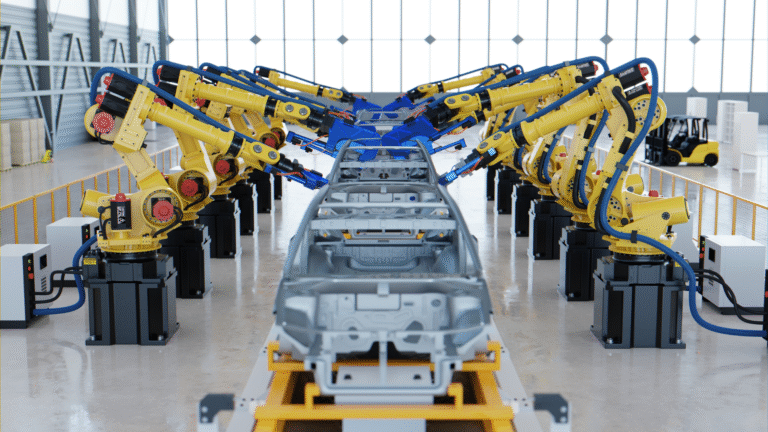Australia is charging ahead with a bold ambition: becoming a global hub for clean-tech manufacturing, especially in electric vehicle (EV) components. From batteries and chargers to supercapacitors and bi-directional energy systems, the country is laying the groundwork for a green industrial revolution.
In this article, we unpack the current state of EV component manufacturing in Australia—where breakthroughs are happening, the remaining gaps, and what it all means for the nation’s economic and environmental future.
Table of Contents
- National Strategy & Federal Support
- Battery Raw Materials to Cathode Powder
- Chargers, V2G and Local Infrastructure
- Advanced Energy Components & R&D
- Regional Manufacturing Hubs: Who’s Leading?
- Challenges & Roadblocks Ahead
- What This Means for EV Buyers & the Economy
- FAQs
- Conclusion
1. National Strategy & Federal Support
Australia’s Future Made in Australia initiative and the National Battery Strategy underpin national ambitions to develop sovereign EV component manufacturing.
In February 2025, the government allocated $30 million to support cathode powder production, aiming to supply up to 1,600 EV batteries annually. Additional investment channels like the Battery Breakthrough Initiative and tech precincts are laying a strong foundation.
2. Battery Raw Materials to Cathode Powder
Australia mines around 50% of the world’s lithium but currently processes less than 1% into battery-grade materials. Efforts are underway to close this gap:
- New cathode-powder plants are scaling up, aiming for high-performance LMFP cathodes that improve range and cut costs.
- Research confirms national potential in assembly and component manufacturing—spanning critical minerals to niche EV packs.
These moves aim to extend Australia’s mineral wealth into higher-value manufacturing.
3. Chargers, V2G and Local Infrastructure
- eLumina has opened a factory on the Gold Coast that builds both lithium batteries and EV chargers, creating about 300 jobs.
- Bi‑directional charger specialists are expanding local production in South Australia—aiming for 75 units/month and upskilling nearly 50 staff.
These developments support energy resilience and smart grid integration.
4. Advanced Energy Components & R&D
Innovation beyond batteries is gaining traction:
- CAP‑XX, based in Sydney, develops ultra-thin supercapacitors for grid, automotive, and IoT use.
- Australian startups are pioneering next-gen anode materials, flow batteries, and BMS tech—bolstered by demand for thermal control and AI-enhanced systems.
These technologies enhance performance and safety across EV ecosystems.
5. Regional Manufacturing Hubs: Who’s Leading?
- Queensland’s Gold Coast hosts key manufacturing labs, backed by state battery-roadmap and job programs.
- South Australia pioneers V2G pilot connectivity and charger assembly.
- NSW’s Nowra plant shows local assembly potential for EV buses.
- Tasmania and Victoria are scaling flow battery production for grid storage—integral to EV charger support.
6. Challenges & Roadblocks Ahead
📉 Processing capacity still lags: Australia exports raw ore and hasn’t yet evolved into a high-volume cathode/ cell hub.
🏗 Scale constraints: Current facilities are proof-of-concept scale—expanding to industrial volumes will take time and investment.
💰 Capital intensity: Cell manufacturing is capex-heavy, competing with global giants supported by major international incentives.
📦 Policy coordination: Success hinges on aligned federal, state, and commercial incentives—plus trade clarity to avoid backlash on imports.
7. What This Means for EV Buyers & the Economy
✅ More local supply can reduce costs and improve availability of chargers, batteries, and service parts.
✅ Energy sovereignty: Home‑grown battery tech feeds smart grids, V2G systems, and resilience for remote communities.
✅ Job creation: New roles are emerging—from materials scientists and engineers to factory floor and logistics staff.
8. FAQs
Q: Are batteries and chargers really made in Australia?
Yes—local plants are building both battery components and chargers.
Q: Will local manufacturing reduce EV prices?
Over time—domestic production minimizes import taxes and supply chain emissions, which lowers costs.
Q: What about EV car assembly?
Passenger vehicle assembly remains limited; current efforts focus on components and public transport vehicles.
9. Conclusion
Australia is taking decisive steps toward local EV component manufacturing—battery materials, chargers, supercapacitors, and grid tech. While capacity must scale further, progress is real, backed by government strategy, investment, and regional industry hubs.
With continued support, Australia could evolve from mineral supplier to clean-tech powerhouse—powering both vehicles and economic growth.
Discover Australia’s progress in EV component manufacturing—batteries, chargers, V2G, and grid technology. Learn how strategy, investment, and innovation are positioning the nation for a sustainable future.
